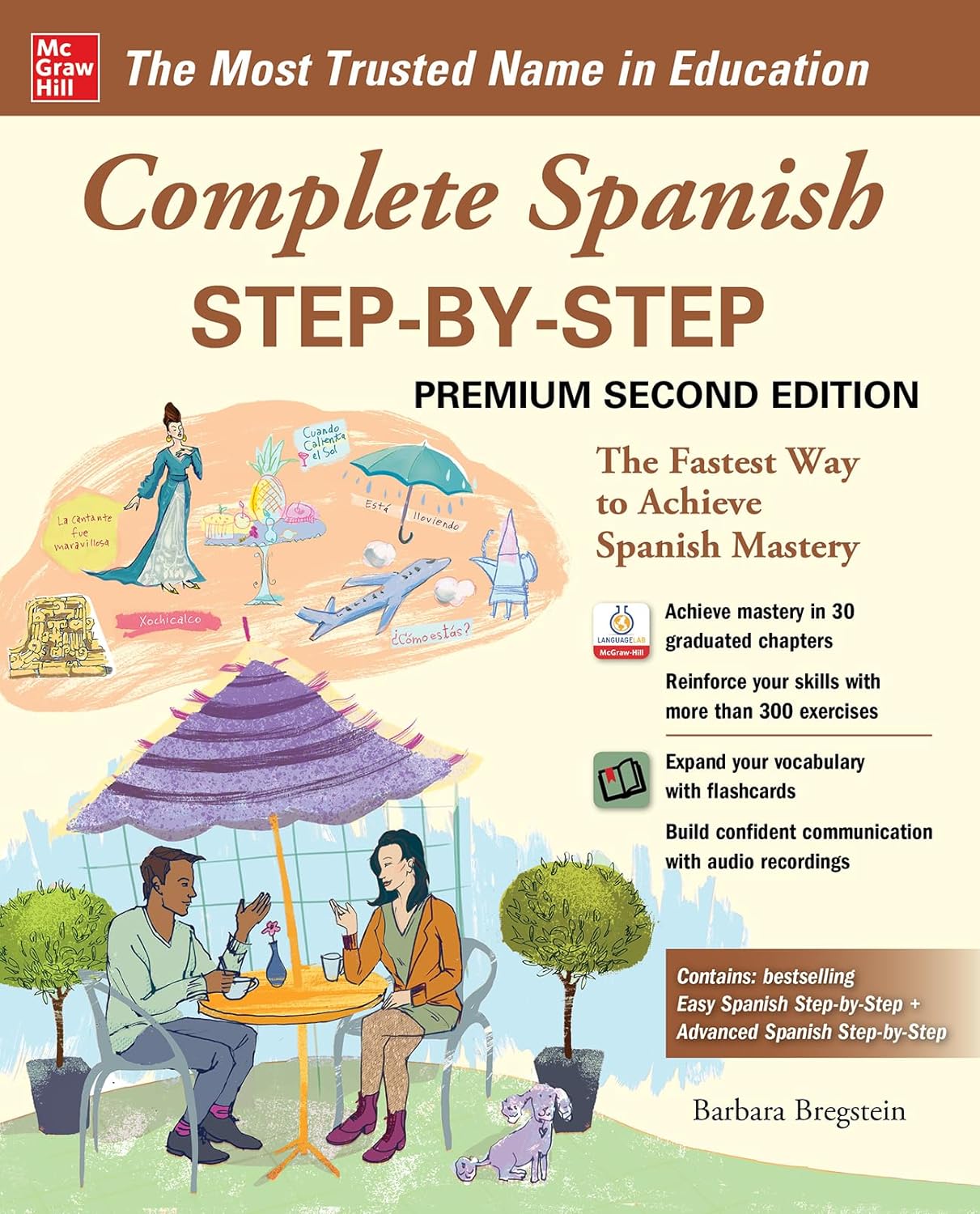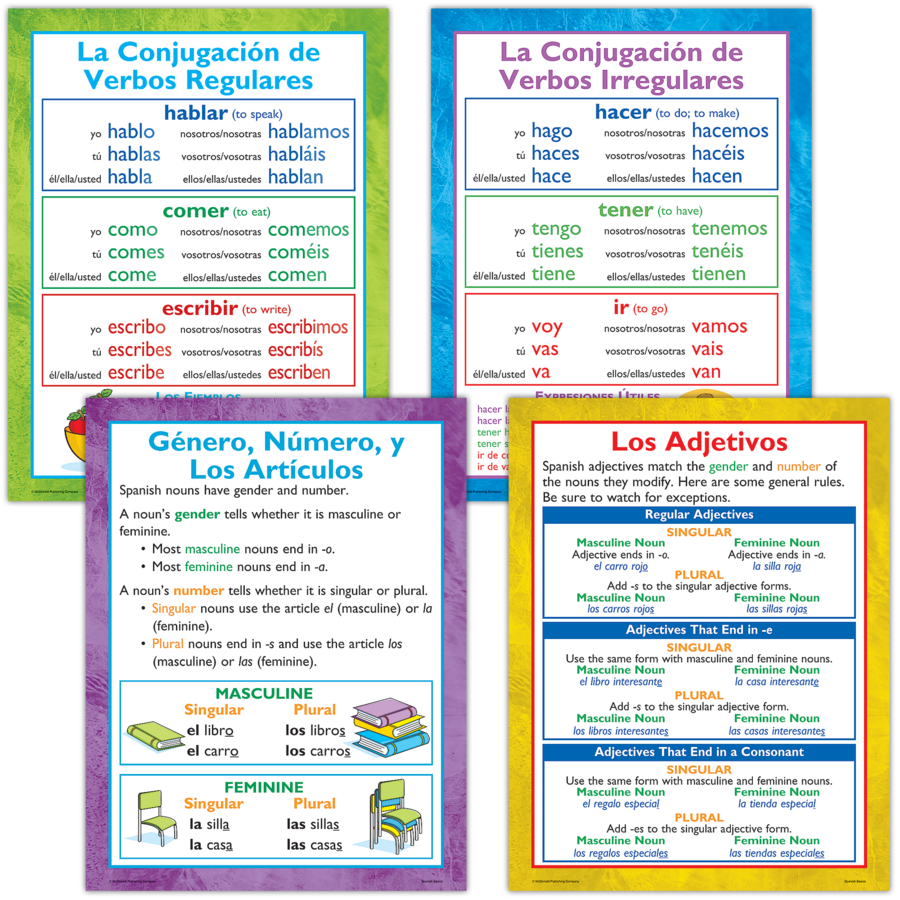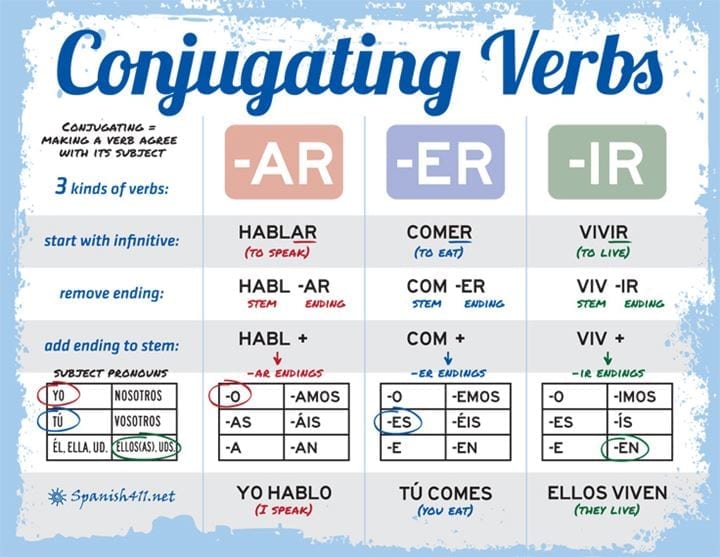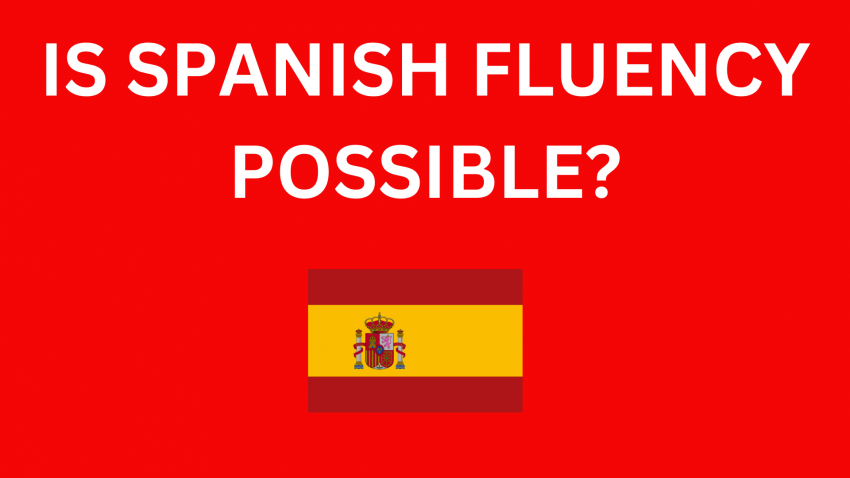
Disclaimer: This post may include affiliate links. If you click one of these links, we may receive a small commission at no extra cost.
Learning a new language is a desire that so many people wish to achieve once in their lifetime. I would say that people are becoming more interested in being able to speak at least three languages.
Lately, there has been a huge demand to speak Spanish because of the diversity that is growing in the United States of America. Immigration is becoming more common due to Expatriatism and exploration of new opportunities.
Due to the changes happening in America, I will argue that Spanish will be the second official language. Spanish will indeed be spoken as another language in the US because most foreigners speak it.
Although learning Spanish is available on many resources, it is imperative to understand well for the future. The internet has valuable tools in reach to study the language and use it for achieving articulation.
Today, I want to share: How To Become Fluent In Spanish.
The following strategies will teach you how to become fluent in Spanish:
The first strategy is to learn all the basics to advanced level of Spanish
The second strategy is to master the verbs, nouns, adjectives, pronouns, etc.
The third strategy is to know how to conjugate verbs and tenses well when necessary
The fourth strategy is to speak and comprehend effectively in Spanish conversations
The fifth strategy is to be able to read and write in Spanish accurately

Regarding the first strategy of learning all the basics to advanced level Spanish, you will need to study the Beginner stage well.
You must learn daily phrases, expressions, telling time, numbers, colors, vocabulary, grammar rules, etc.
Learning these elements will help you to communicate in Spanish. You should get a Spanish textbook that covers everything for a Beginner. The book will be highly organized, easy to use, and helpful in explaining the discussed content.
You must read daily the information in the units of the textbook. Read the information with a lot of interest because the content will help you out.
To help you get the best out of this process, do these steps:
- Read the material actively
- Write down words that you don’t understand on a paper
- Look up the information in a translator/ English & Spanish dictionary
- Get examples of the word to help you understand it more
Following the recent steps, you will know more about most of the Beginner stage Spanish. Everything will come in due time based upon your activity to study it.

In the second strategy to master verbs, nouns, adjectives, pronouns, & etc, you will need to become familiar with using them to help you communicate.
Knowing this information will give you the ability to share and understand Spanish.
You should refer to your Spanish textbook and pay close attention to the verbs, nouns, adjectives, and pronouns. You must read their usages in situations to see how they are used and their meanings.
As a great way to improve your Spanish skills in communication, check out this resource here!
You want to know the best way they are written in sentences. Look at the examples and read the information to see if you comprehend it.
In a helpful way to get you prepared in Spanish, please incorporate this approach:
- Learn all the nouns, adjectives, pronouns, adverbs, verbs, etc.
- Write them down on a notecard in both English and Spanish :1 side Spanish, 1 side English
- Recite back and forth the information in both languages
- Test your memory in knowing the information meaning
- Use the information with sentence examples
- Repetition
In practicing this approach, you will be more aligned to this Spanish study. Your memory will kick in and the examples will give you a guide of support to communicate. All will depend on the effort put into the process.

With the third strategy knowing how to conjugate verbs and tenses well when necessary implies being able to change the tense depending upon the situation.
In Spanish, you must conjugate the verb to connect with the sentence.
Speaking the language is similar to how it is written too. You will change the verb conjugate based on two things the person(s) or item and the tense to express what you are trying to say.
The same is important in answering or asking questions, but when referring to the person. You have to pay attention to the subject, verb, noun, and tense that you will discuss.
For example,
I work at the store today. (Yo trabajo en la tienda hoy.)
work is the verb that indicates the action of working
(I) is the noun, indicates the person
today is the present tense, indicates the time zone (tense)
As a way to help you understand and become more knowledgeable, please implement this:
- Study very well and know your tenses (present, future, past, reflexive, subjunctive,& etc.)
- Become familiar with knowing the person(s) ex. yo, tu, el, ella, usted, nosotros, vos, ellos
- Learn and practice conjugation of verbs
- Know how to write sentences and be able to conjugate verbs depending on the tense
- Practice speaking among native speakers using verbs, tenses
- Purchase Spanish apps to help you learn more grammar in sentences and reading too
Using this implementation is an excellent way to get your knowledge going to understand Spanish. Practicing how to speak and read the language will give you a stronger focus to engage in conversations.

In reviewing the fourth strategy to speak and comprehend effectively in Spanish conversations, relates to having solid communication in sending and receiving information.
This is important because you need to understand information and express yourself back and forth.
Understanding information is a necessity in all languages because interaction helps us to work together and support one another. You should be able to share data with others and, at the same time be able to interpret what others tell you.
In Spanish, a person plays the same role as the sender/receiver and vice versa. Being able to understand effectively and talk in Spanish is powerful to your language communication skills.
As a helpful way to get you prepared to perform well in speaking and comprehension of Spanish, please take the following as a bit of advice:
- Learn all the verbs, nouns, pronouns, adjectives, adverbs, etc.
- Be able to read and write sentences in Spanish
- Be very familiar with knowing tenses with conjugations
- Study the person(s) and use them always in discussions
- Watch TV in Spanish with subtitles and read them in both languages
- Put more time to practice conversational Spanish
- Purchase a Spanish app to learn more about conversations
- Continuous practice!
By practicing Spanish daily in conversations and also applying those suggestions from above, I believe you will be more accustomed to the language.

Examining the fifth strategy to be able to read and write in Spanish accurately focuses on a person’s ability to interact with verbal/nonverbal communication.
Conducting this behavior enables a person to comprehend information and share it with others.
Reading in Spanish is important to your success in understanding what words, phrases, and terms mean. Knowing what they represent will help you to perform conversations and to be able to translate the information for your memory.
Writing in Spanish is important, too, because you must be familiar with writing information in the language. Knowing how to write in Spanish will enable you to express yourself and send messages to others. Also, you have the advantage of doing more activities like doing professional documents and reports and giving your opinions.
To help you advance in the areas of reading and writing Spanish, please implement this:
- Learn very well all the Basics, Intermediate, and advanced Spanish
- Practice your pronunciation of Spanish words, phrases, and vocabs
- Read Spanish textbooks, short stories, and newspapers
- Practice writing Spanish in language textbooks
- Use the Spanish apps to study more
By implementing the suggestions recently shared, you can be far ahead of your Spanish reading and writing skills. The best method is to keep a form of high consistency to stay more adapted to Spanish communication.

In conclusion, to become fluent in Spanish, you must focus heavily on all areas of communication. Focusing on all areas will help you excel in speaking in Spanish with people because daily practice creates consistent actions.
By practicing your Spanish every day and using it among native speakers, you can interact well to the point of comprehending the data. The amount of time that you dedicate will affect your progress in the long run and create a high outcome.
I believe that if you want to gain fluency in Spanish, then you must put in time at least 6 months minimum of consistent effort and, in the long run, two years of repetitive practice. Always remember that the more you study and apply, the faster you arrive at language articulation.
As a sense of encouragement and a valuable asset in helping you to achieve fluency in Spanish, please accept my free E-book “Learning Spanish.” Click the link below to get your copy now and begin reading it.
Click here: Free E-book “Learning Spanish”
Please don’t forget to comment and share this blog on your social media accounts!
If you are new to my blog or interested in seeing a recent post, please click the following post:
“Why Passport Bros Are Looking For Love Abroad”



English. Learning Spanish is becoming increasingly important due to the growing diversity in the United States. The strategies provided, such as mastering grammar and practicing daily, are practical and well-structured. It’s impressive how accessible resources are now for language learning. Consistent practice with a good textbook can significantly improve fluency. How long do you think it would take to become fluent in Spanish using these methods?
Thank you for your interest in learning Spanish and commenting to the post. I would say it tends to vary in fluency because everyone in different in studying. Some people can be more advanced than others due to their learning style. On average, I would say between 6 months to 1 year if you are very heavily consistent. It all depends on you studying it daily. Just apply the 80-20 rule by Paretos way. 80 percent effort will bring 20 % results. 20% work in time contributes to 80 percent of your fluency in Spanish to get in mastery. Just stay consistent by applying the strategies then using Spanish in the street with native speakers. I have some more mastery courses to make soon for those who want to gain more Spanish practice. Stay informed with me.
Learning a new language is indeed a valuable skill, and Spanish seems to be gaining more importance in the U.S. I agree that understanding the basics and practicing daily are crucial for fluency. However, do you think immersion in a Spanish-speaking environment is equally important? I’ve heard that real-life practice accelerates learning. Also, how do you balance learning grammar with conversational skills? Sometimes, focusing too much on rules can slow down speaking confidence. What’s your take on using apps versus traditional textbooks? I’m curious if you’ve tried both and which worked better for you. Lastly, do you think Spanish will truly become a second official language in the U.S., or is it more of a regional necessity? Would love to hear your thoughts!
Thanks for reading my post and commenting too! Yes. Immersion is a great experience because you will get more hands on practice with what you know from the book study or apps. You get a chance to use what you know and apply it. You will be able to interact with native speakers who can assist you with pronunciation and forming sentences verbally. Real life experience is what you should do after you learn the basics and intermediate well. You can practice them both,so you don’t forget the language usage. To balance grammar and conversational skills I like to read well the grammar and practice to myself out loud then I begin to use them in sentences among native speakers. Read and write the Spanish words then put them in sentences then use them in given situations. Both textbooks and apps are good. Books help to do further reading to help you understand more and apps are more accessible to help you read, hear dialogues, be interactive and also test your conversational skills. I like both of them. Apps are more time accessible and easier to follow. Yes, Spanish is already the second language of the USA because of many Latin Americans migrating here and also it is spoken almost everywhere in public places. Are you interested in becoming fluent in Spanish?
Learning a new language is indeed a valuable skill, and Spanish seems to be a practical choice given its growing importance in the U.S. I appreciate the structured approach you’ve outlined for becoming fluent in Spanish, especially the emphasis on mastering grammar and daily practice. However, I wonder if immersion—like living in a Spanish-speaking country or engaging with native speakers—would accelerate the learning process even more. Do you think self-study alone is enough to achieve fluency, or is real-world practice essential? Also, how long do you estimate it would take for someone to become fluent using these strategies? I’m curious to hear your thoughts on balancing self-study with immersive experiences. What’s your take on the role of cultural understanding in language learning?
Thank you for your interest in Spanish and reading this post. Yes! The more you verbally practice speaking Spanish the better you can be in conversations. I believe that if you put in time to speak daily with consistency then you will speak it like a “Pro.” You can definitely go to a Spanish speaking country or basically practice your Spanish with a native speaker too. It is more affordable to practice it with a native speaker because the person lives near you. Also, you can learn Spanish on your own by using the apps or maybe get a Spanish textbook to learn more grammar and practice writing and reading it. Fluency varies depending on the time, effort and dedication to study. Everyone is different, it takes time like 6 months to 1 year or 2 years depending on how quickly you study and then utilize it. I would say you should begin to use apps and if possible get a Spanish textbook to learn the grammar and read it well. Practice writing sentences then read them out loud. Use them in situations with native speakers, maybe watch tv in Spanish to help remember verbs and usages too. Then do conversations in Spanish repetitously!
Nice share!
Thank you for reading and commenting!
Thanks for your feedback and interest here!
Learning a new language is indeed a valuable skill, and Spanish seems to be gaining even more importance in the U.S. I agree that understanding the basics and mastering grammar are crucial steps toward fluency. However, do you think immersion in a Spanish-speaking environment is equally important, or can one achieve fluency solely through textbooks and online resources? I’ve noticed that practicing with native speakers accelerates learning, but it’s not always accessible. What’s your take on balancing structured learning with real-life practice? Also, do you believe Spanish will truly become a second official language in the U.S., or is it more about cultural integration? I’d love to hear your thoughts on how this shift might impact education and daily life.
Thanks for responding and reading this post! I would say that immersion is a great approach to nail down Spanish conversations and verbal practice. Also, it is good to begin studying Spanish by books and other resources like language apps. Software is helpful because it gives you the detailed information for a newbie or a person who is still learning more. First, master all the basics to intermediate then use what you know in given situations later you can do an immersions with more practice. Knowing how to communicate with the vocabulary will help you. Real life experience is good and will give you that immersion effect and inspire you to learn more. Spanish is the 2nd language of the USA because you have many Spanish speakers immigrating to the USA in big numbers.
Learning a new language is indeed a valuable skill, and Spanish seems to be gaining significant importance in the U.S. I agree that understanding Spanish can open up many opportunities, especially with the growing diversity. The strategies you’ve shared are practical, but I wonder how long it typically takes to reach fluency using these methods. Do you think immersion in a Spanish-speaking environment is necessary, or can self-study with textbooks and online resources be enough? I’m curious about your experience—have you personally achieved fluency in Spanish? Also, how do you stay motivated during the learning process? I’d love to hear more about your journey and any additional tips you might have!
Great points that you expressed and thanks for responding! Fluency takes time and everyone is different when it comes to learning. You should study very well all the nouns, verbs, adjectives, and pronouns first and know how to conjugate them. Be able to differentiate the tenses to help to you know the times being discussed. Also, learn the verb and know its meaning, so when you speak in Spanish or hear someone speaking you will have an idea what is being talked about. To stay motivated in learning Spanish, you should think about the reward of knowing the language. Some rewards would be job opportunities, business, friends, travel abroad, cultural assimilation, and maybe seeking another nationality in latin america. Let the reward keep you inspired! Also know that you want to know what people say and how to defend yourself or maybe you want to sound like a native Spanish speaker who can converse fast in Spanish. Just be open to having fluency.
More blogs like this would make the web more useful.
Thanks for your interest and feedback!
THANK YOU FOR YOUR FEEDBACK!
Thanks for creating this. It’s brilliant work.
Your welcome my friend, my goal is to provide you the best strategies to master Spanish. Your ultimate goal is to achieve fluency in the long run and use the language for communication purposes.
Thanks for sharing. It’s top quality.
your welcome! glad to help you with this content.
Such a beneficial read.
I found new insight from this.
Thanks for commenting to this post! You can achieve fluency in Spanish, it is possible, but you have to invest in yourself to learn it and then apply it when necessary.
I took away a great deal from this.
Thanks for the comment, you can become fluent by staying consistent with practicing Spanish. How much do you know?
This is the kind of content I enjoy reading.
I am happy to hear that you got some value here!
The depth in this piece is remarkable.
Thanks Andrew! How much Spanish do you know so far?
I learned a lot from this.
Yes Mark, just follow and implement those strategies shared in my post!
I particularly admired the way this was laid out.
Thanks Simon. What did you enjoy the most about the information here?
I genuinely appreciated the manner this was laid out.
I appreciate the feedback and support!
I’ll surely bookmark this page.
I appreciate the support!